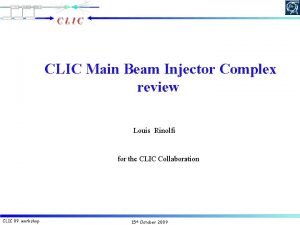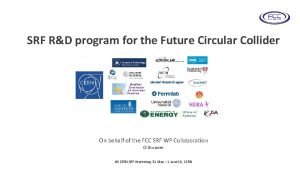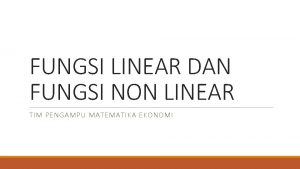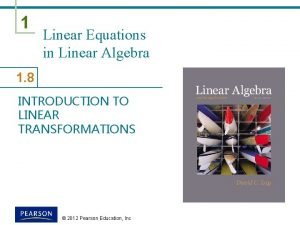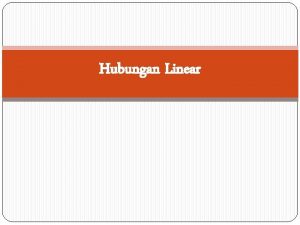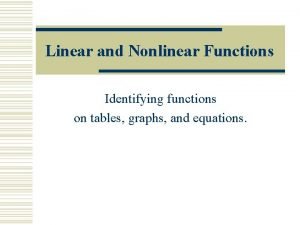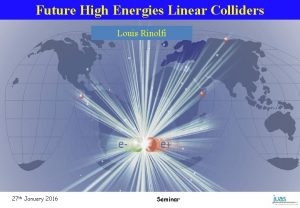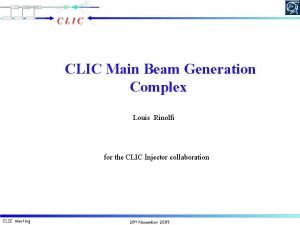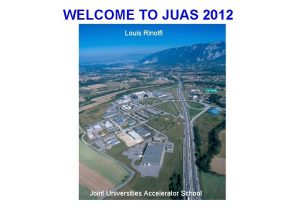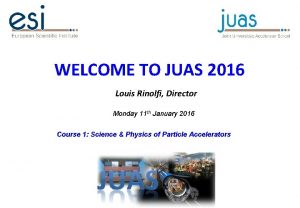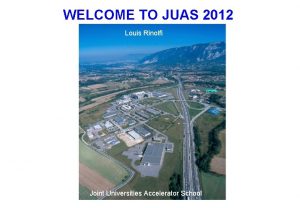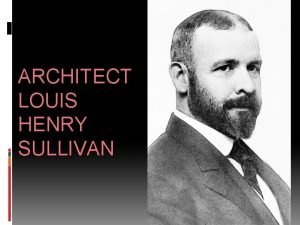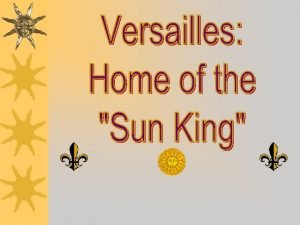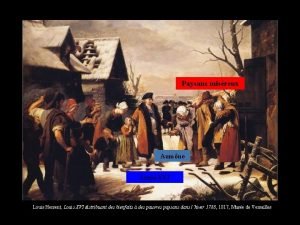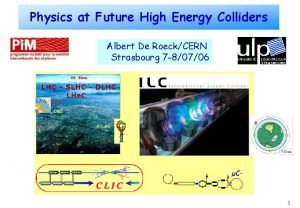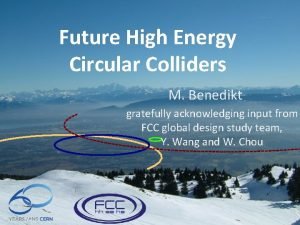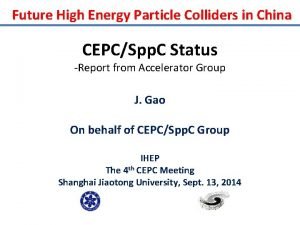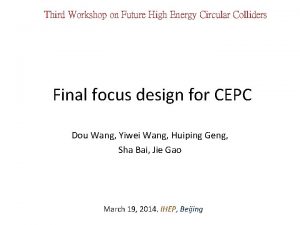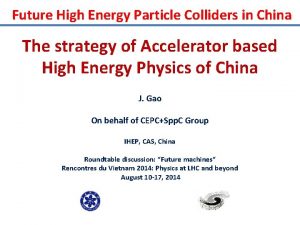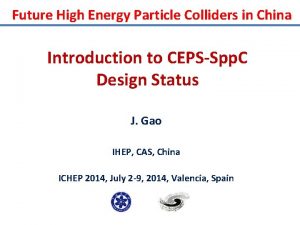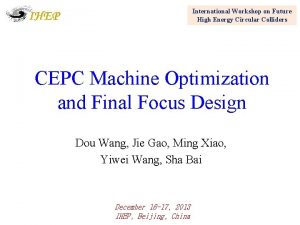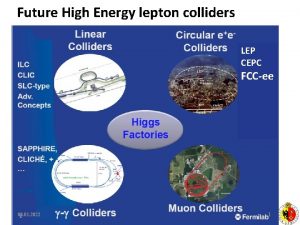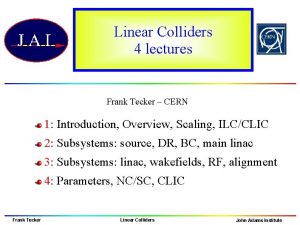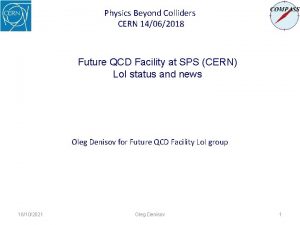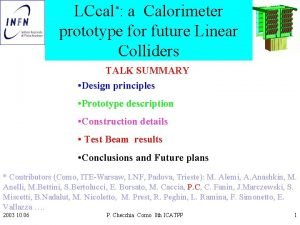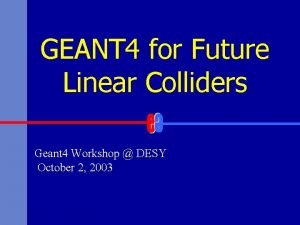Future High Energy Linear Colliders Louis Rinolfi CERN





































- Slides: 37

Future High Energy Linear Colliders Louis Rinolfi CERN 29 th January 2018 JUAS Seminar L. Rinolfi 1

Hadrons versus leptons colliders p p • hadron collider => frontier of physics – discovery machine – quarks collisions – not all nucleon energy available in collision – huge background e+ e- Simulation of HIGGS production e+e– → Z H Z → e+e–, H → bb • lepton collider => precision physics – study machine – elementary particles collisions – well defined CM energy – polarization possible 29 th January 2018 JUAS Seminar L. Rinolfi 2

Basic Linear Collider e+ target e- e+ e- With a reduced power consumption and a minimum cost Reach the highest collision energy Reach the highest luminosity BDS = Beam Delivery System RTML = Return To Main Linac 29 th January 2018 JUAS Seminar L. Rinolfi 3

Luminosity Number of events = L. sevent is the probability of producing a particular event L is a measure of the total number of interactions The unit of the cross-section (sevent) is the barn (1 barn = 10 -28 m 2) => 1 fb = 10 -43 m 2 If the cross-section to produce a given event is 1 fb then we would need 1 fb-1 of data to get 1 event!! L=N 29 th January 2018 events /s JUAS Seminar event L. Rinolfi 4

Major parameters for linear colliders Energy (center of mass) Ecm = 2 Ffill Llinac GRF Me. V m MV/m Hz Luminosity (basic) L = nb N+ N- frep 4 p sx sy cm cm-2 s-1 Ffill = Filling factor of the Linac; nb = number of bunches; 29 th January 2018 Llinac = Length of the linac; N = number of particles per bunch; JUAS Seminar GRF = accelerating gradient sx, sy = beam size parameters L. Rinolfi 5

Brief history of high energy linear colliders e+ e 1985: CLIC = CERN Linear Collider => Compact Linear Collider 1989: SLC = Stanford Linear Collider Start operation with the beam 1995: Six linear colliders studies at high energy, in parallel: => TESLA (1. 3 GHz, superconducting, SC) => SBLC (3 GHz, normal conducting, NC) => NLC (11. 4 GHz, normal conducting, NC) => JLC (11. 4 GHz, normal conducting, NC) => VLEPP (14 GHz, normal conducting, NC) => CLIC (30 GHz, normal conducting, NC) 2004: International Technology Recommendation Panel selects the Superconducting RF technology versus room temperature technology => ILC (International Linear Collider) based on TESLA technolgy 2018: Two studies, on high energy linear colliders: ILC at 1. 3 GHz (SC) for the multi(100’s)-Ge. V and CLIC study at 12 GHz (NC) for the multi-Te. V 29 th January 2018 JUAS Seminar L. Rinolfi 6

SLC (Stanford Linear Collider) – California - USA 2 experiments: MARK II, SLD Energy: 92 Ge. V Peak Luminosity: 2 x 1030 cm-2 s-1 The only Linear Collider who was running with a beam (up to now) e- (45 Ge. V) and e+ (45 Ge. V) Operation: 1989 -1998 29 th January 2018 JUAS Seminar L. Rinolfi 7

29 th January 2018 JUAS Seminar L. Rinolfi 8

ICFA/LCB/LCC Organization in 2017 ICFA = International Committee for Future Accelerators ICFA Chair: Joachim Mnich LCB = Linear Collider Board LCC = Linear Collider Collaboration LCB Chair: Tatsuya Nakada LCC Director: Lyn Evans ILC Associate Director: Shin Michizono 29 th January 2018 CLIC Associate Director: Steinar Stapnes JUAS Seminar Deputy Hitoshi Murayama Physics & Detectors Associate Director: Jim Brau L. Rinolfi 9

CLIC (Compact Linear Collider) e+ e- 1. 5 Te. V / beam Layout for 3 Te. V center of mass (cm) 29 th January 2018 JUAS Seminar L. Rinolfi 10

CLIC basic scheme Drive Beam supplies RF power • 12 GHz bunch structure • low energy (2. 4 Ge. V - 240 Me. V) • high current (100 A) Main beam is for physics • high energy (9 Ge. V – 1. 5 Te. V) • current 1. 2 A G = 100 MV/m f = 12 GHz 29 th January 2018 G = 100 MV/m f = 12 GHz JUAS Seminar L. Rinolfi 11

CLIC project Phil Burrows / CERN workshop 2018 Optimize machine design w. r. t. cost and power for a staged approach to reach multi-Te. V scales: ~ 380 Ge. V (optimised for Higgs + top physics) ~ 1500 Ge. V ~ 3000 Ge. V Adapting appropriately to LHC + other physics findings Possibility for first physics no later than 2035 Project Plan to include accelerator, detector, physics 29 th January 2018 JUAS Seminar L. Rinolfi 12

CLIC parameters Parameter 380 Ge. V 1. 5 Te. V 3 Te. V Total luminosity L (1034 cm-2 sec-1) 1. 5 3. 7 5. 9 L above 99% of √s (1034 cm-2 sec-1) 0. 9 1. 4 2. 0 Accelerating gradient (MV/m) 72 72/100 Site length (km) 11. 4 29. 0 50. 1 Number of bunches per train 352 312 Number of particles per bunch (109) 5. 2 3. 7 Normalized emittance (end of linac) ex/ey (nm. rad) 920/20 660/20 Beam size at IP σx/σy (nm) 150/2. 9 ~60/1. 5 ~40/1 Beam size at IP σz (μm) 70 44 44 Estimated power consumption (MW) 252 364 589 29 th January 2018 JUAS Seminar For the 3 stages: Repetition frequency f = 50 Hz RF pulse length t = 244 ns Bunch separation Main beam Dt = 0. 5 ns L. Rinolfi 13

11. 4 km 20 km 50 km 29 th January 2018 JUAS Seminar 14 L. Rinolfi

CLIC Collaborations 32 Countries – over 70 Institutes 31 Countries – over 50 Institutes Accelerator collaboration Detector collaboration Accelerator + Detector collaboration 29 th January 2018 JUAS Seminar L. Rinolfi 15

Some challenging parameters Accelerating gradient ( G = 100 MV/m) Very low break down rate in the accelerating cavities (BDR < 10 -7) Beam emittance production and preservation (ge n = 5 nm. rad at Damping ring exit) Ground motion and stability requirements Positron flux ( 1. 1 1014 e+/s => 20 times more than the SLC machine produced) Beam size at IP (sy = 1 nm) Power consumption ( ~ 600 MW) Cost (several billions of €, $, CHF, …. . ) ……. . 29 th January 2018 JUAS Seminar L. Rinolfi 16

CLIC Timeline CLIC Workshop 2018 : https: //indico. cern. ch/event/656356/ 29 th January 2018 JUAS Seminar L. Rinolfi 17

ILC (International Linear Collider) e+ e- 29 th January 2018 JUAS Seminar L. Rinolfi 18

ILC accelerator overview ► High gradient acceleration with super-conducting RF cavities G = 31. 5 MV/m ► High luminosity ► Polarized beams 29 th January 2018 L = 1. 8 1034 cm-2 s-1 JUAS Seminar L. Rinolfi 19

ILC parameters Parameter Symbol ILC Unit Ecm 500 Ge. V L 2 1034 cm-2 s-1 L 99% 1 1034 cm-2 s-1 Main Linac RF Frequency f. RF 1. 3 GHz Linac repetition rate frep 5 Hz No. of particles / bunch Nb 20 109 No. of bunches / pulse kb 1312 Beam pulse length Dt 730 ms Main beam current I 5. 8 m. A Accelerating gradient G 31. 5 MV/m Beam power / beam Pb 10. 8 MW IP beam size before pinch σ*x / σ *y 640 / 5. 7 nm Transverse emittances γεx / γεy 8000 / 40 nm rad ltot 31 km ηwp-rf 9. 4 % Ptot 230 MW Center of mass energy Total luminosity Luminosity (in 1% of energy) Proposed site length Wall-plug power to beam efficiency Total site AC power 29 th January 2018 JUAS Seminar L. Rinolfi 20

ILC staging options To cover with high precision Higgs and top quark physics 29 th January 2018 JUAS Seminar L. Rinolfi 21

ILC in Japan Kitakami site IP Region 29 th January 2018 JUAS Seminar L. Rinolfi 22

Worldwide SRF Collaboration Shin Michizono / KEK CERN, DESY FNAL/ANL MSU IHEP, PKU TRIUMF CEA, CNS-LAL INFN SLAC, LCLS-II KEK Cornell JLAB IUAC, RRCAT ILC-SRF technology Americas, LCLS-II European XFEL Asia, PAPS@IHEP CFF/STF@KEK 29 th January 2018 JUAS Seminar L. Rinolfi 23

Some challenging parameters Accelerating gradient in SC cavities ( G = 31 MV/m) Beam emittance production and preservation (ge n = 10 nm. rad at Damping ring exit) Ground motion and stability requirements Positron flux ( 3. 9 1014 e+/s => 70 times more than the SLC machine produced) Beam size at IP (sy = 6 nm) Power consumption ( ~ 230 MW) Cost (several billions of €, $, CHF, …. . ) …. . 29 th January 2018 JUAS Seminar L. Rinolfi 24

Decision on ILC in 2018 ? Fabiola Gianotti / 16/01/2018 CERN https: //agenda. linearcollider. org/event/7645/overview 29 th January 2018 JUAS Seminar L. Rinolfi 25

Luminosity performance e+e- colliders Note 1: Peak luminosity at SLC (92 Ge. V) was ~1030 cm-2 s-1 Note 2: Peak luminosity at LEP 2 (209 Ge. V) was ~1032 cm-2 s-1 29 th January 2018 JUAS Seminar L. Rinolfi 26

Other possible future linear colliders LWFA = Laser Wake Field Accelerator PWFA = Plasma Wake Field Accelerator SWFA = Structure Wake Field Accelerator DLA = Dielectric Laser Accelerator JUAS Seminar on The future of particle accelerators (European context) 11 th January 2018 by M. Vretenar /CERN JUAS Seminar on Laser Plasma Accelerator 31 st January 2018 by R. Abmann / DESY EAAC workshop – Elba - Italy 29 th January 2018 JUAS Seminar L. Rinolfi 27

Wakefields for higher accelerating fields LWFA = Wakefields are driven in plasma by intense laser beams PWFA = Wakefields are driven in plasma by particle beams SWFA = Wakefields are driven in dielectric structures by particle beams DLA = Wakefields are driven in dielectric structures by very short laser pulses RF accelerating structure 100 MV/m F 6 mm 29 th January 2018 Dielectric accelerating structure ~ 2 GV/m Plasma accelerating structure ~ 100 GV/m 25 cm JUAS Seminar L. Rinolfi 28

LWFA for Linear Collider 29 th January 2018 JUAS Seminar L. Rinolfi 29

PWFA for Linear Collider Concept for PWFA-LC layout for 1 Te. V. Based on earlier work from 2009 by Raubenheimer et al. E. Adli et al. , “A beam driven Plasma Wake-Field Linear Collider”, CSS 2013 and ar. Xiv: 1308. 1145 29 th January 2018 JUAS Seminar L. Rinolfi 30

Which future collider ? 29 th January 2018 JUAS Seminar L. Rinolfi 31

Linear muon collider ? F. Zimmermann, “Final Focus Challenges for Muon Colliders at Highest Energies, ” CERN-SL-99 -077 -AP. - AIP Conf. Proc. : 530 (1999) , pp. In : Colliders and Collider Physics at the Highest Energies : Muon Colliders at 10 Te. V to 100 Te. V, Montauk, NY, USA, 27 Sep - 1 Oct 1999, pp. 347 -367 29 th January 2018 JUAS Seminar L. Rinolfi 32

Future physics ? LHC continues to investigate what physics is behind the Higgs boson and what energy scale should be considered. 29 th January 2018 JUAS Seminar L. Rinolfi 33

Many fundamental questions remain open Fabiola Gianotti / 16/01/2018 CERN The future of high energy physic seems very exciting !!! 29 th January 2018 JUAS Seminar L. Rinolfi 34 34

Looking the future 29 th January 2018 JUAS Seminar L. Rinolfi 35

Conclusion JUAS students are the future machine builders …. for future high energy particle accelerators ! 29 th January 2018 JUAS Seminar L. Rinolfi 36

Acknowledgements Thanks to Erik Adli, Ralph Assmann, Fabiola Gianotti, Phil Burrows, Paul Emma, Andrea Latina, W. P. Leemans, Lucie Linssen, Shin Michizono, Tsunehiko Omori, John Osborne, Roger Ruber, Nick Walker, Akira Yamamoto, Frank Zimmermann 29 th January 2018 JUAS Seminar L. Rinolfi 37
 Louis rinolfi
Louis rinolfi Future perfect and future continuous
Future perfect and future continuous Future simple continuous perfect
Future simple continuous perfect Louis xvi louis vuitton
Louis xvi louis vuitton Martinello colider
Martinello colider Energy energy transfer and general energy analysis
Energy energy transfer and general energy analysis Energy energy transfer and general energy analysis
Energy energy transfer and general energy analysis Hssip cern
Hssip cern Hssip cern
Hssip cern Future perfect presentation
Future perfect presentation Tense chart for class 3
Tense chart for class 3 Future perfect and future continuous examples
Future perfect and future continuous examples Future nurse future midwife e learning
Future nurse future midwife e learning Present continuous past
Present continuous past Plan in present progressive
Plan in present progressive Perfect infinitive
Perfect infinitive Future plans and finished future actions
Future plans and finished future actions Perfect future continuous tense
Perfect future continuous tense Kondicional engleski
Kondicional engleski Gearing up for the future (senior high school)
Gearing up for the future (senior high school) Simple linear regression and multiple linear regression
Simple linear regression and multiple linear regression Persamaan non linier metode biseksi
Persamaan non linier metode biseksi Linear and non linear text
Linear and non linear text Definition of linear plot in literature
Definition of linear plot in literature Contoh soal persamaan non linier metode biseksi
Contoh soal persamaan non linier metode biseksi Linear vs nonlinear pipelining
Linear vs nonlinear pipelining Multimedia def
Multimedia def Right linear grammar and left linear grammar
Right linear grammar and left linear grammar Contoh soal fungsi non linier
Contoh soal fungsi non linier Nonlinear function
Nonlinear function What is linear dependence and independence
What is linear dependence and independence Linear algebra linear transformation
Linear algebra linear transformation Dwi koordinat
Dwi koordinat Linear momentum and linear impulse
Linear momentum and linear impulse Graphical method simultaneous equations
Graphical method simultaneous equations Linear and nonlinear tables
Linear and nonlinear tables Linear and nonlinear tables
Linear and nonlinear tables Difference between linear and nonlinear analysis
Difference between linear and nonlinear analysis
